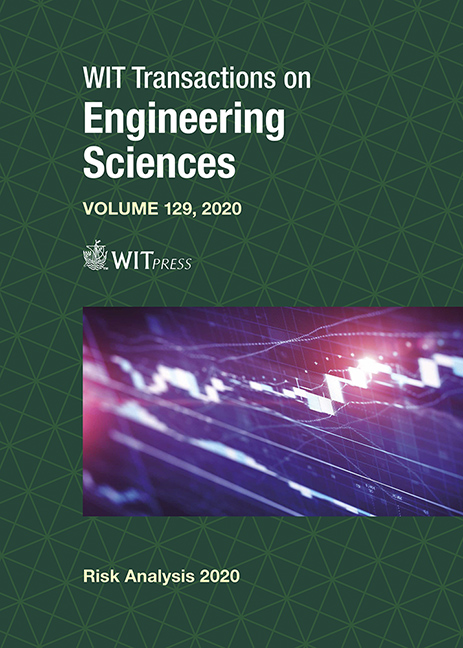SPATIAL PREDICTION OF COASTAL FLOOD-SUSCEPTIBLE AREAS IN MUSCAT GOVERNORATE USING AN ENTROPY WEIGHTED METHOD
Price
Free (open access)
Transaction
Volume
129
Pages
13
Page Range
121 - 133
Published
2020
Size
623 kb
Paper DOI
10.2495/RISK200111
Copyright
WIT Press
Author(s)
HANAN Y. AL-HINAI, RIFAAT ABDALLA
Abstract
Flooding is one of the most commonly occurring natural hazards worldwide. Mapping and evaluation of potential flood hazards are vital parts of flood risk assessment and mitigation. This study focuses on predicting the coastal flood susceptibility area in Muscat Governorate, Sultanate of Oman. First, it is assumed that the occurrence of a hazard can be determined based on the indicators influencing it. Thus, four indicators were selected and classified into five classes based on their contribution to flood hazard probability; these include ground elevation, slope degree, soil hydrologic group, and distance from the coast. Then, the entropy weighted method was applied to calculate the weights of given indicators in influencing flood hazards. The results were finally aggregated into ArcGIS software and the produced maps were reclassified into five coastal flood susceptibility zones. The results show that the soil indicator has the highest rate of weight in Wilayats Bawshar, Muttrah, Muscat and Qurayyat. While the elevation indicator has the highest rate of flood hazard in Wilayat AlSeeb. The weight results were used then for calculation of flood hazard index which was then classified into five classes of flood hazard susceptibility zones. The results of this work will be very useful in pursuing work on assessing the potential of multiple hazard risk interactions. It is essential to include certain indicators such as land use and land cover in future work, as they play a major role in water infiltration and runoff behaviour.
Keywords
entropy weighted method, ArcGIS software, influencing indicators, precondition factors, Sultanate of Oman, trigger factors





